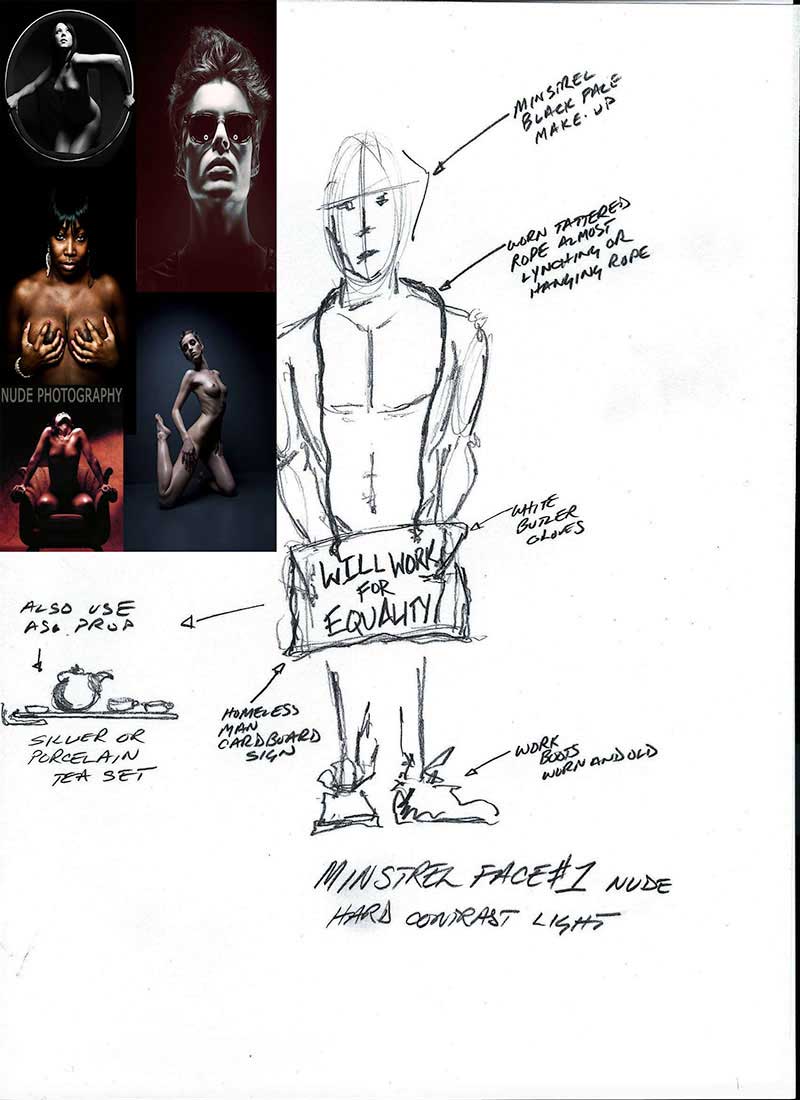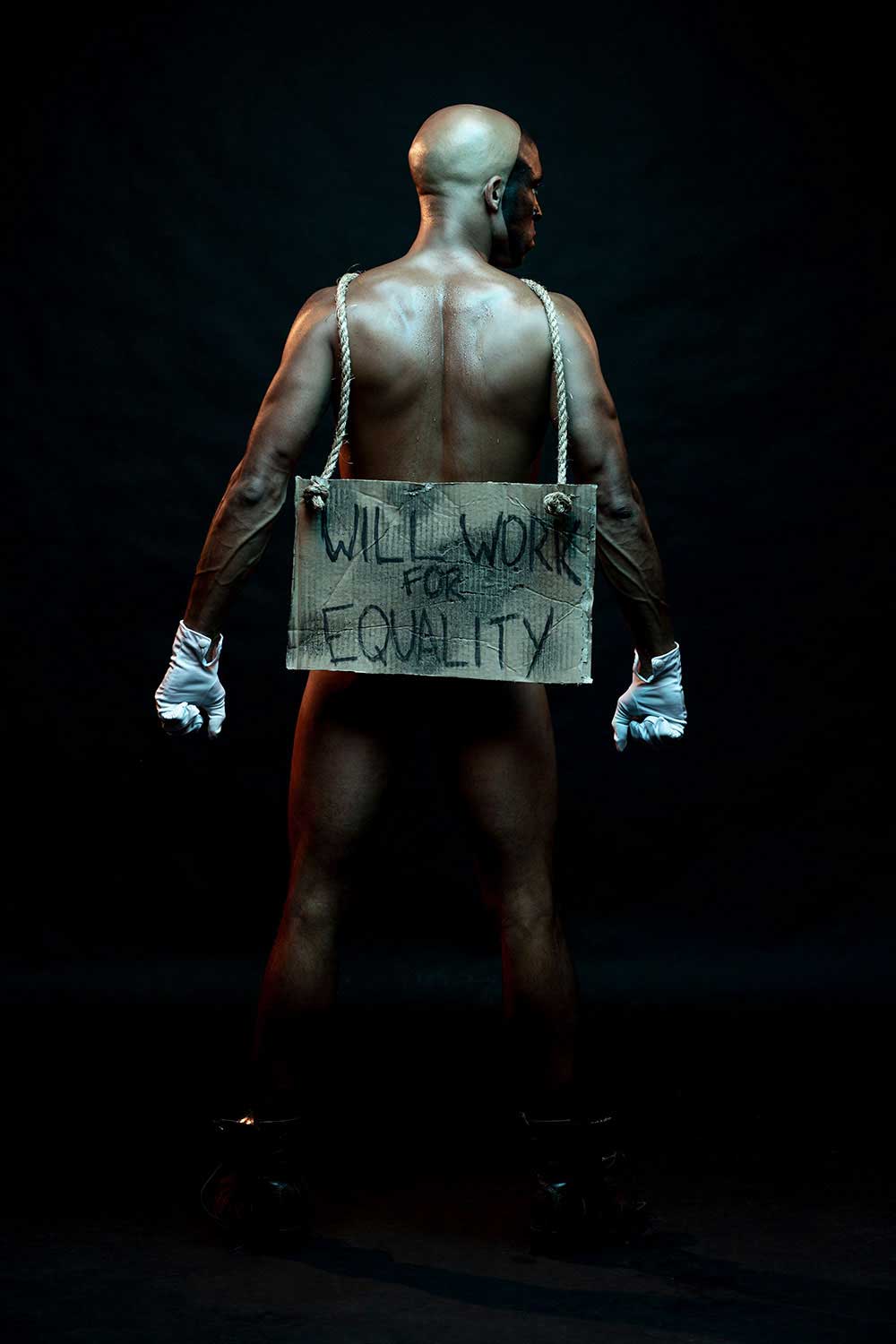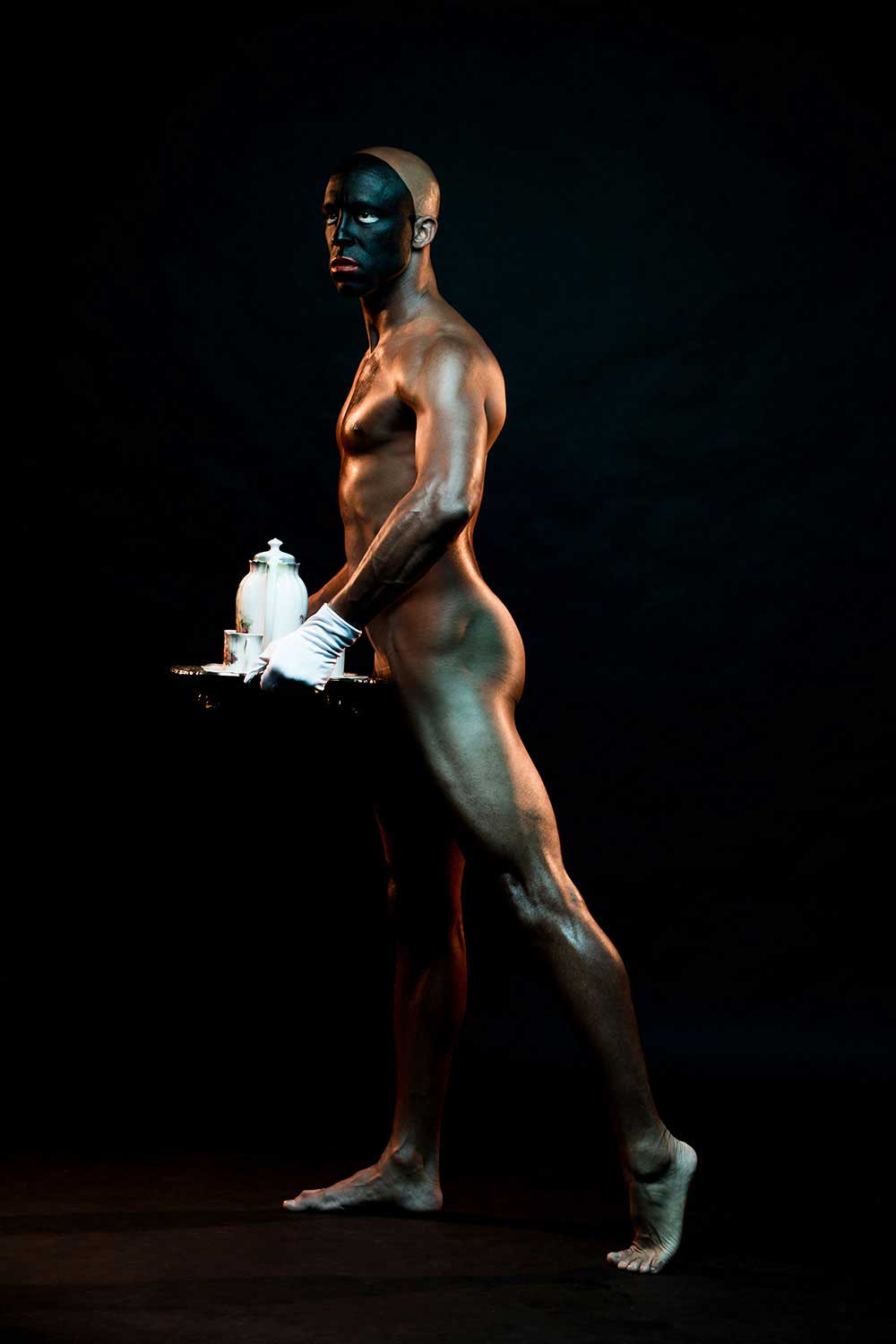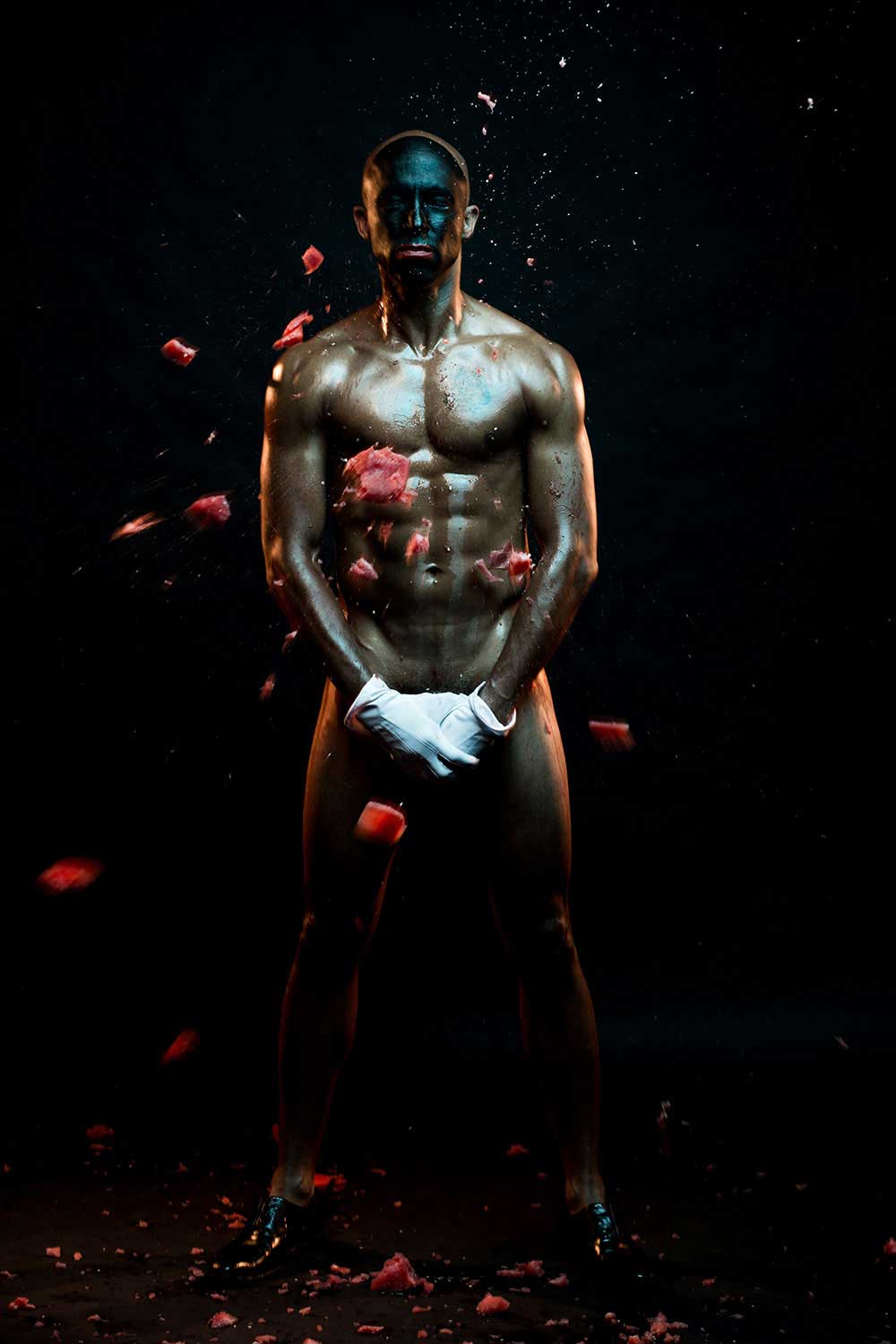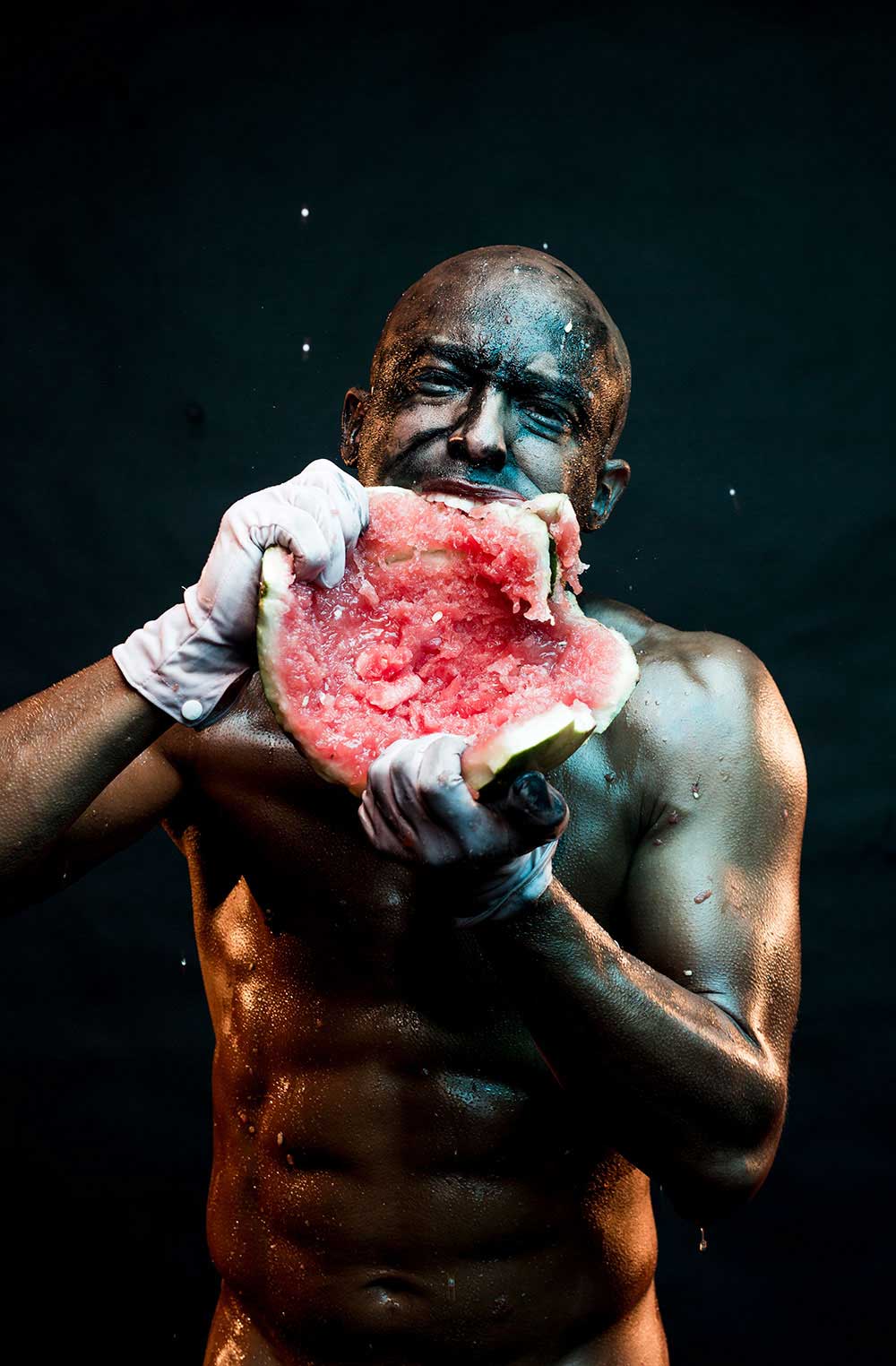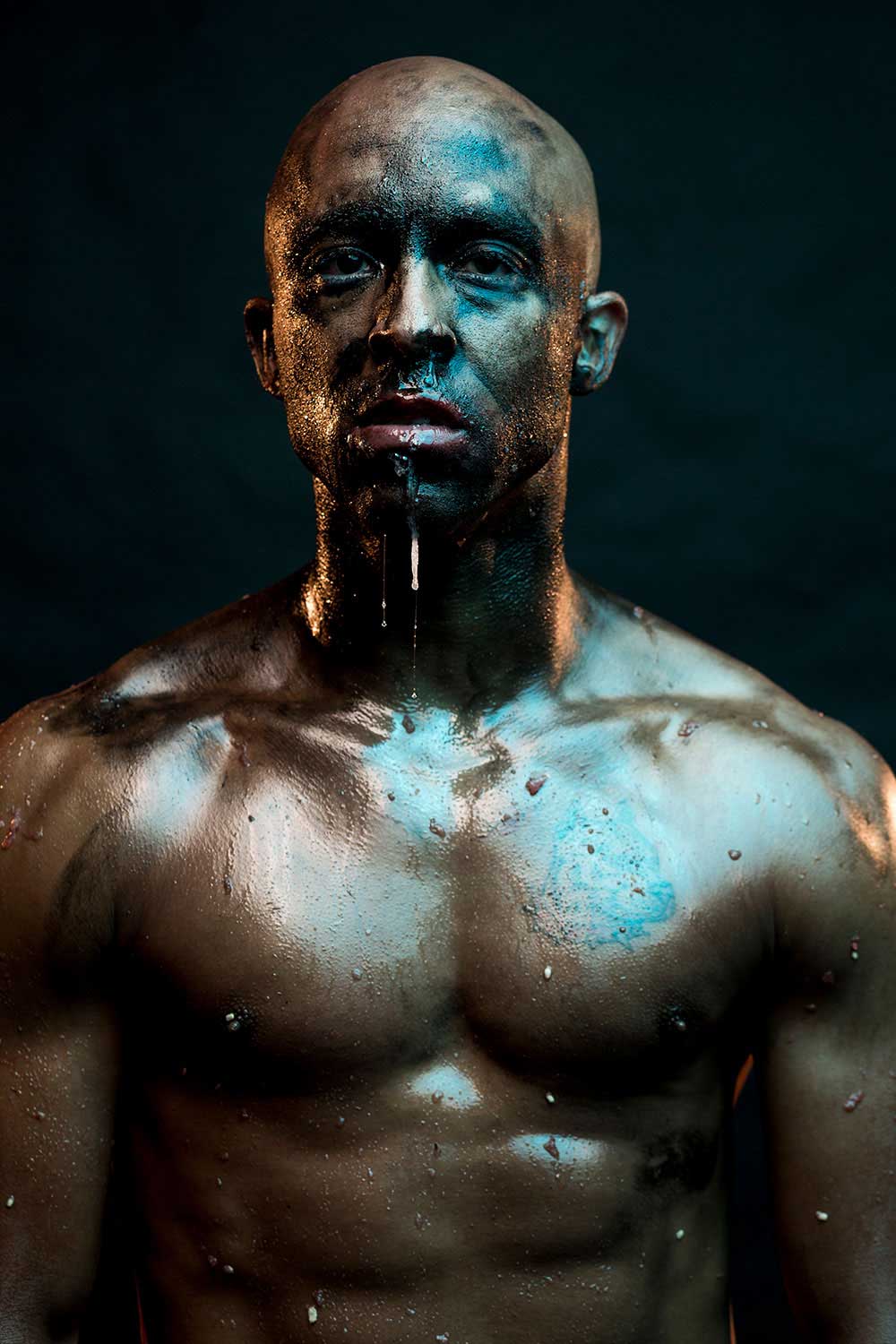The Minstrel Show was one of the largest American theater movements in history that would eventually evolve into Vaudeville. It consisted of comic skits, variety acts, dancing and music, performed by white people in blackface. Minstrel shows painted black people as dim-witted, lazy, buffoonish, superstitious, and musical.
By 1848, blackface minstrel shows were the national art form, overtaking opera in popularity. It infiltrated film, television, and radio all the way through silent films and the 21st century. Amateur performances continued until the 1960s in high schools, and local theaters throughout the south.
We focused on telling the story of David Bianchi’s envisioned to illuminate the disparity of black and minority presence in modern entertainment and media. The series begins stoic using elements of the white subservient gloves, (to indicate the role of the black person in elite white culture) against the nude form of a black man pained in blackface to make an oxymoronic image of himself.
The use of the homeless sign will work for equality is a metaphor for the will to lose oneself in order to be treated fairly. As the series evolves the man uses stereotypes to re-enforce his perceived status in society, hence the glorification of the watermelon while sitting in a gold-plated throne.
Eventually his black face is peeled away erotically by the hands of a white to indicate what he thinks will make him more equal. Tragically it ends in the demise of his spirit where he is destroyed by choking on the very stereotypes that he held so high in value.
In the end all he has left is his naked body, a broken spirit, pummeled by watermelon pieces of his past while wearing the soaked and stained white gloves that have held up the American view of his race since slavery.
It was beyond moving to capture this series. Racism exists globally and people are negligent to reality. The focus of this series is to shed some light on the situation. Everyone is human and no one is superior to another.
Not only was it fun but educational for me as an artist. I learned a lot from David about what African American’s experienced through the 19th century. I knew about Minstrelsy vaguely and this series gave me a big new perspective on the inequality still alive in this generation.
About Isaac Alvarez
Isaac Alvarez is a commercial photographer, director, and artist based in Los Angeles, California. Isaac is well known for his dramatic portraits that resonate emotions while giving the viewer a powerful insight into the lives of his subjects. His work is a reflection of contemporary/cinematic. While his images are often on the edge of any situation, photographing the situation is not nearly as interesting as photographing the edges of human emotions.
Isaac Alvarez has been a professional photographer for many years. He studied photography early on at the «Art Institute of Los Angeles» located in Santa Monica, CA. He then worked at a studio located in Monrovia, CA assisting a well-known furniture photographer. Soon after, he was applying and expanding on what he learned in projects from upcoming models, artist and agencies. Concept projects have taken him from the streets of midtown Los Angeles to colorful sites at Santa Monica and the sun-drenched beaches of California’s coast. Isaac’s love of photographing people has to lead him to work with some of the top public relations firms in Beverly Hills.
Isaac Alvarez views the art of photography as a subtractive process, a distilling of reality into a personal vision. As such he often uses the tools of modern photography – different film stocks, filters, digital enhancement – to try to capture in an image the emotions he felt at the moment he tripped the camera’s shutter.
Working in a wide variety of areas, Isaac specializes in portrait and commercial photography with a touch of fashion and editorial. Isaac’s photographs have appeared in various media including magazines, posters, commercials, billboards, catalogs, and advertising materials. [Official Website]



